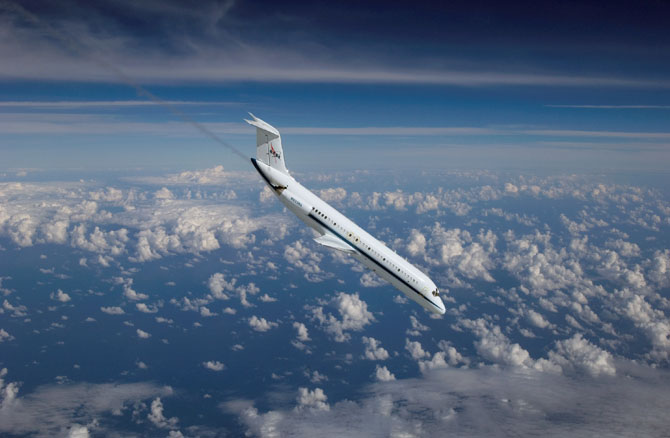
Hang on for zero gravity.
Get ready for the Vomit Comet!
Fresh from the International Space University, alumnus Dario Schor is one of the speakers at the Dream Big events taking place all week. He’s speaking on NASA’s so-called “Vomit Comet,” the KC-135A used by NASA to conduct zero-gravity testing. His presentation is called “Vomit Comet: Hands on Experiments for Parabolic Flight.”
You can see more on the “vomit comet” in the video below.
This exciting alumnus completed his B.Sc. and M.Sc. degrees in Computer Engineering in 2008 and 2013 respectively, both at the University of Manitoba (UofM). His research interest includes evolutionary algorithms for cognitive machines, and particularly the design of hardware and algorithms with software implementations for space applications, resulting in several conference and journal publications.
Currently, Schor works as a Software Engineer at Magellan Aerospace Winnipeg where he designs, implements, and tests elements of the flight software and ground tools to support small-satellite missions such as CASSIOPE and the Radarsat Constellation Mission (RCM).
Here’s what he had to say about parabolic flight:
Last summer, while attending the Space Studies Program offered by the International Space University, a group of classmates and I submitted a proposal for a parabolic flight experiment that would investigate the effects on gravity on sensorimotor processes.
That is, we wanted to evaluate how our body performs and adapts to different gravity conditions when some of the visual and physical cues around us are taken away.
This kind of research helps to train and develop counter-measures for future human space missions.
In the experiment, subjects perform a series pointing tasks using a touch screen monitor while measuring a subject’s reaction time and accuracy performing the tasks.
To simulate the different environments where some of the visual and physical cues are removed, subjects repeat the tasks using inversion goggles. The hypothesis is that when using inversion goggles, the number of errors should decrease in zero gravity conditions because the physical cues are diminished — so our bodies do not have a reference point to tell they are being inverted.
According to the Canadian Space Agency, “Parabolic flights can simulate microgravity. These parabolic manoeuvres, executed by modified commercial jets, give the opportunity to obtain short periods of free fall. On the upward arc, the thrust of the airplane is adjusted so that there is no lift: the plane is in free fall since nothing reduces the force of gravity. The plane remains in free fall over the top of the parabola and part of the downward arc. Microgravity conditions are achieved for time periods of 15 to 20 seconds, in which it is possible to conduct experiments. By free floating experiments, low g-levels can be achieved for 5 to 8 seconds.”
I attended the Space Studies Program at the International Space University in Strasbourg, France after defending my thesis in Comp. Engineering at the University of Manitoba. There were 100 participants from 22 different nations with varying backgrounds and a common interest in space studies.
The program emphasizes the (i) international, (ii) intercultural, and (iii) interdisciplinary nature of space. During the program, we attended lectures on space applications and engineering, human performance in space, space humanities, space management and business, space policy and law, and space sciences.
Each lecture was carefully crafted and delivered by experts in the field.
For example, NASA astronaut Jeffrey Hoffman delivered the lectures on human performance in space sharing his experience, while Prof. John Logsdon, long time space historian, delivered many history and policy lectures providing insight into both current and upcoming events in the industry.
In addition to the lectures, the participants were divided into three teams to work on large capstone projects that require in depth research and creative thinking.
The capstone projects evaluate the technical, financial, and political feasibility with respect to the end user. These three projects were recently presented at the annual United Nations Office for Outer Space Affairs session to promote discussion and ideas on space projects that can benefit mankind
I worked on project AMBIEnT – an affordable microsatellite based internet access and environmental monitoring constellation to aid in the digital divide in the Brazilian Amazon.
In January 2014, the team had a design review with engineers from Magellan Aerospace, Winnipeg. They provided a great deal of feedback based on their experience designing experiments for shuttle missions and the international space station.
Since then, the team has completed implementing the software and building the apparatus. Ground trials are currently underway in Strasbourg, France, and the experiment is scheduled to fly in an European Space Agency parabolic flight campaign in September 2014.







The picture is not a KC-135 but a McDonnell Douglas C-9. NASA does not use KC-135 any more.